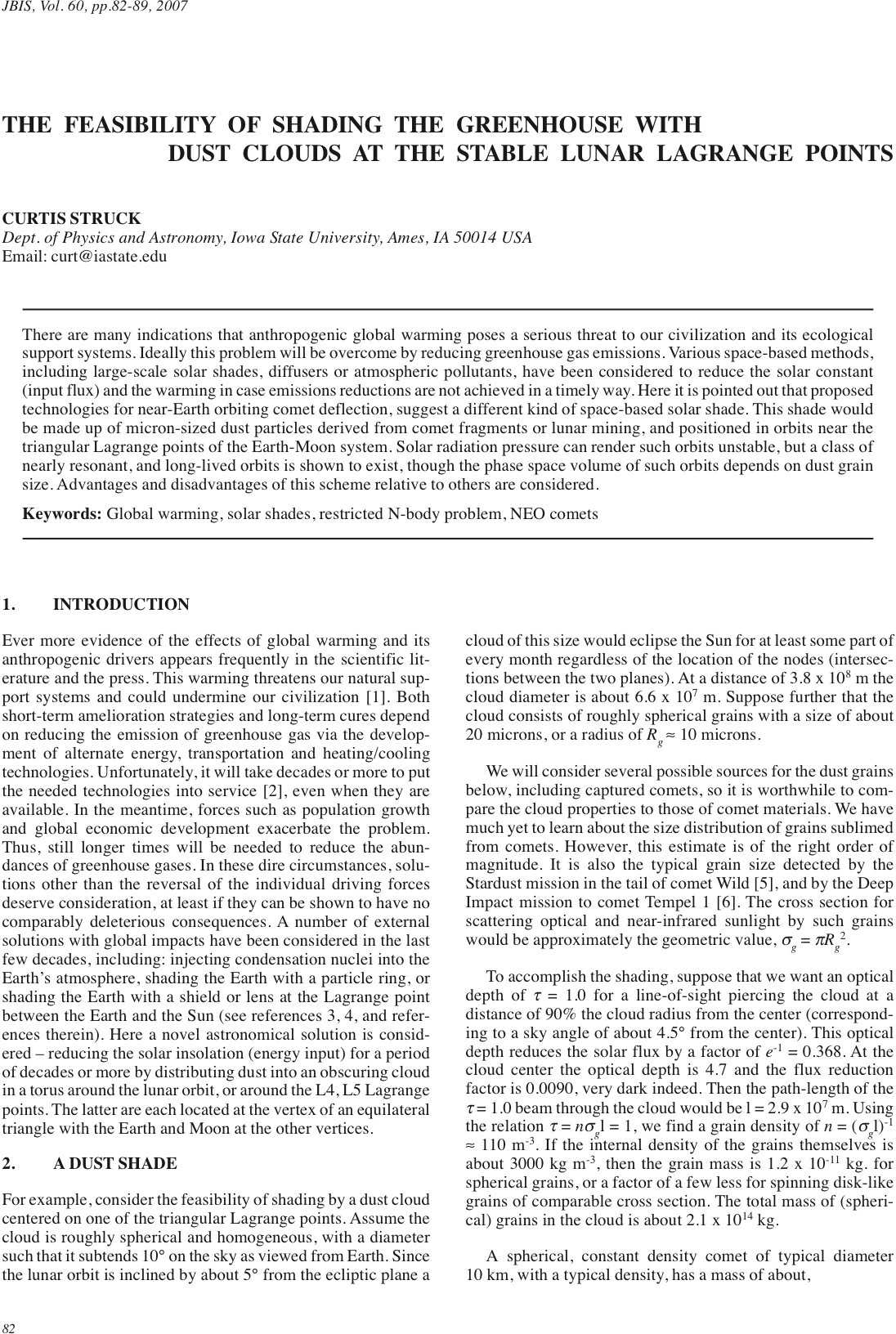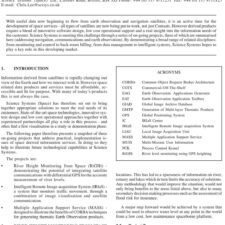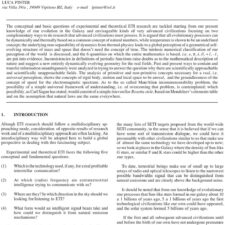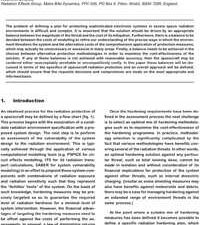The Feasibility of Shading the Greenhouse with Dust Clouds at the Stable Lunar Lagrange Points
£5.00
C. Struck (2007), JBIS, 60, 82-89
Refcode: 2007.60.82
Abstract:
There are many indications that anthropogenic global warming poses a serious threat to our civilization and its ecological support systems. Ideally this problem will be overcome by reducing greenhouse gas emissions. Various space-based methods, including large-scale solar shades, diffusers or atmospheric pollutants, have been considered to reduce the solar constant (input flux) and the warming in case emissions reductions are not achieved in a timely way. Here it is pointed out that proposed technologies for near-Earth orbiting comet deflection, suggest a different kind of space-based solar shade. This shade would be made up of micron-sized dust particles derived from comet fragments or lunar mining, and positioned in orbits near the triangular Lagrange points of the Earth-Moon system. Solar radiation pressure can render such orbits unstable, but a class of nearly resonant, and long-lived orbits is shown to exist, though the phase space volume of such orbits depends on dust grain size. Advantages and disadvantages of this scheme relative to others are considered.





